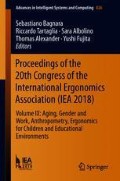Abstract
For most college going students, participation in sport and exercise provides many health benefits. Unfortunately some individuals do not ingest sufficient energy to meet the demands of physical exertion and all physiological functions due to irregular eating habits. This leads to a state of low energy availability (LEA) which can negatively affect bone health, cardiovascular function, and reproduction, gastrointestinal and mental health. The three most researched health consequences of LEA are the clinical end points eating disorders and disordered eating, musculoskeletal disorders, and stress fractures (due to loss of bone health) which occur on a spectrum from health to disease. [Purpose] Identifying female students along the spectrum can result in early detection which in turn can prevent these conditions from progressing and reaching the clinical end points. [Subjects and Methods] 100 participants (18–25 years of age) were recruited according to the selection criteria and ethical clearance. Outcome measures were Eating Attitudes Test- 26 (EAT-26), questionnaire regarding the participant’s exercise patterns, bone mineral density and Nordic questionnaire for musculoskeletal disorders. [Results] Pearson correlation test was applied on the variables to get positive linear correlation between physical activity and bone mineral density and negative correlation between scores from EAT-26 and bone mineral density. Results from Nordic questionnaire showed that 63% of the subjects had experienced musculoskeletal disorders, most of which was regarding low back. In the present study 58% of females reported having an injury in the past year. [Conclusion] Disordered eating certainly affects the overall well-being of a female by affecting the bone health. Dietary counselling and physical activity can help improve the health status in the college going females. Controlling their attitude towards health through proper awareness can also improve their quality of life.
Access this chapter
Tax calculation will be finalised at checkout
Purchases are for personal use only
References
Bouillon P, Burckhardt P, Christiansen C et al (1991) Consensus development conference: prophylaxis and treatment of osteoporosis. Am J Med 90:107–110
Cooper C, Campion G, Melton LJ 3rd (1999) Hip fractures in the elderly: a world-wide projection. Osteoporos Int 22:285–289
Kanis JA, Melton J, Christiansen C, Johnston CC, Kjaltaev N (1994) The diagnosis of osteoporosis. J Bone Miner Res 9:1137–1141
Moayyeri A, Adams JE, Adler RA et al (2012) Quantitative ultrasound of the heel and fracture risk assessment: an updated meta-analysis. Osteoporos Int 23:143–153
Mountjoy M, Sundgot-Borgen J, Burke L, Carter S, Constantini N, Lebrun C, Ljungqvist A (2014) The IOC consensus statement: beyond the Female Athlete Triad-Relative Energy Deficiency in Sport (RED-S). Br J Sports Med 48(7):491–497
Nattiv A, Loucks AB, Manore MM, Sanborn CF, Sundgot- Borgen J, Warren MP (2007) American college of sports medicine position stand. The female athlete triad. Med Sci Sports Exerc 39:1867–1882
NIH (2001) Consensus development panel on osteoporosis, prevention, diagnosis and therapy. JAMA 285:785–795
Pate RR, Pratt M, Blair SN, Haskell WL, Macera CA, Bouchard C, King AC (1995) Physical activity and public health: a recommendation from the Centers for Disease Control and Prevention and the American College of Sports Medicine. JAMA 273(5):402–407
World Health Organization (1994) Assessment of fracture risk and its application to screening for postmenopausal osteoporosis, Geneva, Switzerland
Author information
Authors and Affiliations
Corresponding author
Editor information
Editors and Affiliations
Rights and permissions
Copyright information
© 2019 Springer Nature Switzerland AG
About this paper
Cite this paper
Kaur, A., Dsingh, A. (2019). Interrelationship Between Dietary Intake, Bone Mineral Density and Incidence of the Development of Musculoskeletal Disorders in College Students. In: Bagnara, S., Tartaglia, R., Albolino, S., Alexander, T., Fujita, Y. (eds) Proceedings of the 20th Congress of the International Ergonomics Association (IEA 2018). IEA 2018. Advances in Intelligent Systems and Computing, vol 826. Springer, Cham. https://doi.org/10.1007/978-3-319-96065-4_38
Download citation
DOI: https://doi.org/10.1007/978-3-319-96065-4_38
Published:
Publisher Name: Springer, Cham
Print ISBN: 978-3-319-96064-7
Online ISBN: 978-3-319-96065-4
eBook Packages: Intelligent Technologies and RoboticsIntelligent Technologies and Robotics (R0)

